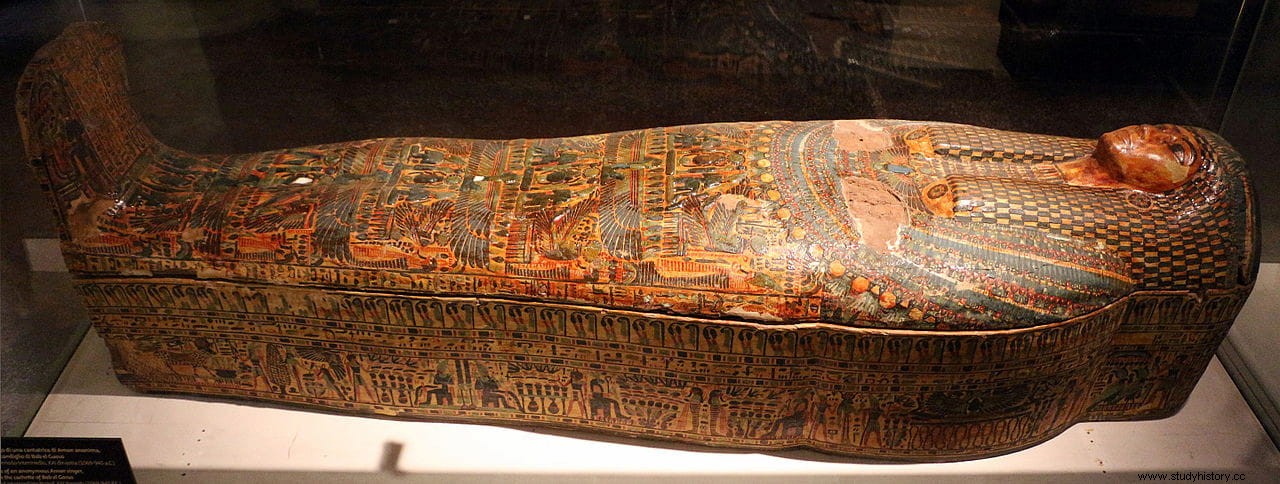Looking at the facade of the great temple of Hatshepsut in Deir el-Bahari, to the right next to the modern visitor center, there is a square space without any indication, in front of which tourists often pass without stopping. He is known as Bab el-Gasus (the door of the priests ).
It is the gateway to the burial place of 153 priests and priestesses, servants of the god Amun in that temple during the 21st dynasty (1070 to 945 BC). Today forgotten by visitors, and even by most archaeologists, its discovery was a great event in 1891 .
Because the magnitude of what was found inside it rivaled even the largest and most famous collections ever found in Egypt. From there the archaeologists extracted in just a few days 254 sarcophagi, 110 boxes of shabtis, more than 100 papyri, 80 statuettes, steles, amulets, fabrics and even flowers.
The finding was also important because it allowed us to understand to a large extent what life was like for men and women from the middle classes of society, in a troubled time. A period of time following the assassination of Ramses III, a few decades before the start of the 21st dynasty, when the priests of the temple of Amun ruled middle and upper Egypt.
All of that fell into oblivion so that even as the 125th anniversary of the discovery was recently celebrated, , the conference held by the Ministry of Antiquities in Zamalek referred to Bab el-Gaus as the forgotten discovery .
The Bab el-Gasus excavation was a victim of its own success. So many objects were extracted from it that it was impossible to store them all in the Giza museum, the predecessor of the current Egyptian Museum. So the government decided in 1893 to deliver half of the sarcophagi and other pieces to Western countries .

These batches, in turn, were divided into many others upon arrival in the recipient countries. For example, in France several regional museums received pieces through the Louvre. At a time when the records were not exactly rigorous, with which many pieces are technically missing.
Those that remained in Egypt were stored and few have been exposed to the public. Even pieces as important as the papyrus of the woman and the crocodile , hang today on the stairs of the Egyptian Museum with no mention of their provenance.
In some Western museums, sarcophagi from Bab el-Gasus can be seen, where they are the central pieces of the collection. They can be recognized by the dark yellow varnish used by the artisans of the Theban workshops, and by the rich decoration of their walls, bottom and lid.
In recent years it seems that the Egyptians have returned to resume interest in the analysis of the deposit. Mainly as a means of better understanding the role of women in the religious practices of the time. Up to 70 priestesses have been identified from the findings, and an investigation is pending to trace their family relationships and the meaning of each of their titles.
A new conference on Bab el-Gasus is scheduled to take place in September in Lisbon, with the addition of a special exhibition at the Egyptian Museum in Cairo in November, showing some of the main pieces for the first time. Finally it seems that the discovery of the door of the priests you will regain your place in history.
